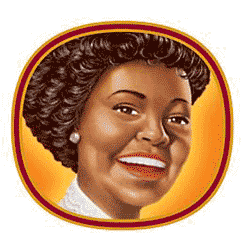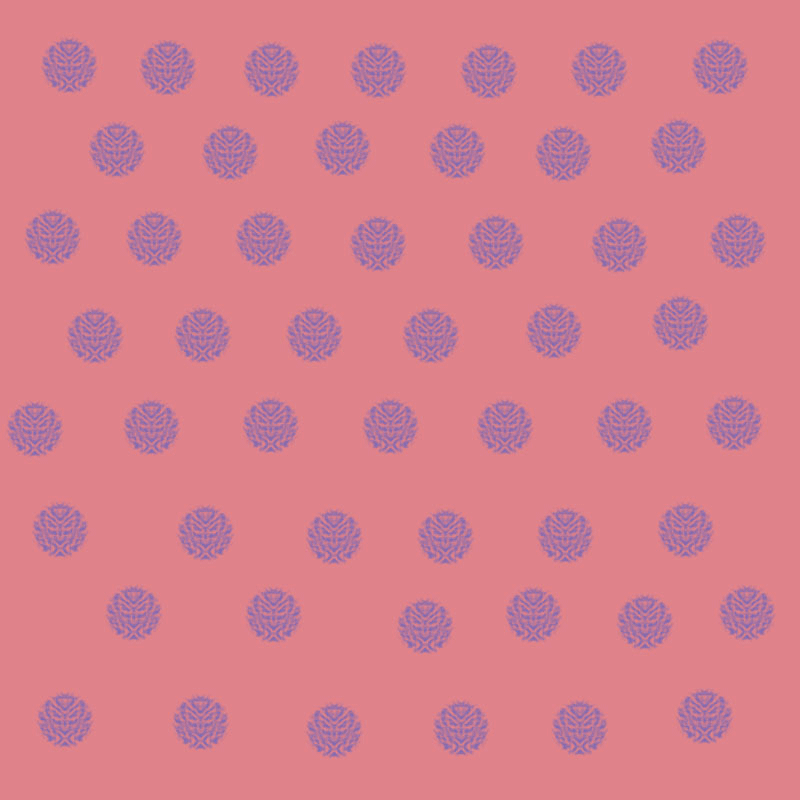I first heard about the racist history of Aunt Jemima in Alwin Jones’ Black Life Matters lecture last year. This year, Komozi Woodward also brought up this history in his lecture. He explained that the advertising used was that of a ‘slave in a box’. After brainstorming a list of possible images, I settled on Aunt Jemima. Originally, I wanted to remove the smile and pearl earring, swap in a wig, and change the coloring of her face so it wouldn’t look so light and glowy. The lighting made her appear like she was wearing makeup. I wanted to alter the image to create one more closely aligned with the realities of slavery. My second idea was to take an image of Georgina, one of the lead characters from Get Out, and make that the new Aunt Jemima image. This option felt like the easy way out, the way to get around using Photoshop, a program I had no previous experience with, so instead I returned to my first idea. I spent hours trying to learn the tools of Photoshop and apply them to my photo. I would often try to use a tool and the result would look nothing like the tutorial I had learned it from. I emailed the image to myself but lost layers of the photo in the process. I eventually learned from a friend that I needed a flash drive and I needed to save the image as a tiff.
 The next class was coming up quickly and I did not have an image I was satisfied with. I had a vision in my head, but I could not figure out how to make my idea appear on my computer screen. Two days before this class met again, I realized that if I were to go through with my first idea, I would be creating an image that already exists. I would be exchanging Aunt Jemima with the image of slavery that you would find in a Black history textbook. Both my original and second ideas relied on a pre-existing image. I realized my first idea was just another easy way out. At this point, I had removed the pearl earrings, and all of Aunt Jemima’s hair (in preparation for a wig). I had eased some of the ‘smile lines’ and turned the image into Black and White. I planned to leave my image as is and ask for assistance from the class. I saw the current version of my image as pure trash. In fact, I almost deleted it before class. Shockingly, I received overwhelming amounts of praise from the class, so I made some minor changes, and then decided it was final. I printed the image onto sticker paper and cut them out by hand with scissors. I then went to a few different stores including CVS, True Value Drugs, and ACME. I couldn’t find Aunt Jermima products at the first two, but I placed the stickers over the original Aunt Jermima images at ACME. Aunt Jermima’s image is on two different spots on the box of the pancake mix. My sticker was a bit too small for one of the spots but fit perfectly on the other spot.
The next class was coming up quickly and I did not have an image I was satisfied with. I had a vision in my head, but I could not figure out how to make my idea appear on my computer screen. Two days before this class met again, I realized that if I were to go through with my first idea, I would be creating an image that already exists. I would be exchanging Aunt Jemima with the image of slavery that you would find in a Black history textbook. Both my original and second ideas relied on a pre-existing image. I realized my first idea was just another easy way out. At this point, I had removed the pearl earrings, and all of Aunt Jemima’s hair (in preparation for a wig). I had eased some of the ‘smile lines’ and turned the image into Black and White. I planned to leave my image as is and ask for assistance from the class. I saw the current version of my image as pure trash. In fact, I almost deleted it before class. Shockingly, I received overwhelming amounts of praise from the class, so I made some minor changes, and then decided it was final. I printed the image onto sticker paper and cut them out by hand with scissors. I then went to a few different stores including CVS, True Value Drugs, and ACME. I couldn’t find Aunt Jermima products at the first two, but I placed the stickers over the original Aunt Jermima images at ACME. Aunt Jermima’s image is on two different spots on the box of the pancake mix. My sticker was a bit too small for one of the spots but fit perfectly on the other spot.
I was heavily inspired by Shephard Fairey’s Sticker Art and Mark Vallen’s critique of Shephard Fairey. Although I appreciated the replicability and accessibility of stickers that Fairey described, I lost respect for him after reading Vallen’s critique. My impression was that Fairey was quite self-absorbed. Vallen described that after Fairey was busted for plagiarism of a White Panther image, Fairey made a joke about it and said “I wish all my busts ended that well” (Vallen, 6). Although Fairey alters images to create something new, he begins with a pre-existing image. Fairey for example, took an image advocating for the liberation of Puerto Rico, took in out of the context of Puerto Rico and into the context of the Obey slogan. This isn’t inherently plagiarism. This is similar to what I did in altering the image of Aunt Jemima. However, Fairey does not give credit to any of the original artists. Fairey’s view on race and graffiti culture also rubbed me the wrong way. “I was somehow convinced graffiti was something you had to be born into, like a Black or Hispanic mafia” (Fairey, 2). The use of the term mafia seems like an insult. Fairey fails to mention that graffiti is a part of Hip-Hop culture which is a piece of Black and Hispanic culture. If he is going to engage in graffiti culture, which some would argue he should not be doing at all, then he must understand where that culture comes from. Also, it makes sense that he does not feel like he will fit into this culture, because it is not his. I hijacked an image that mocked the conditions of slavery. I did not use humor in my image, because the original image used humor and it did not work. It is what made the image so offensive. Another reason I rejected my original idea was because the image of slavery is shown so often that individuals become desensitized to it. It is also not my place to put that trauma on display. Additionally, my final image, which peers described as ‘ghostly’, better communicated my message which was that individuals need to re-think the implications of Aunt Jemima. The ghostly nature drew on inspiration from Get Out, but did not steal a pre-existing image. Throughout this project, I had to figure out which of my ideas would communicate my message while maintaining originality.





